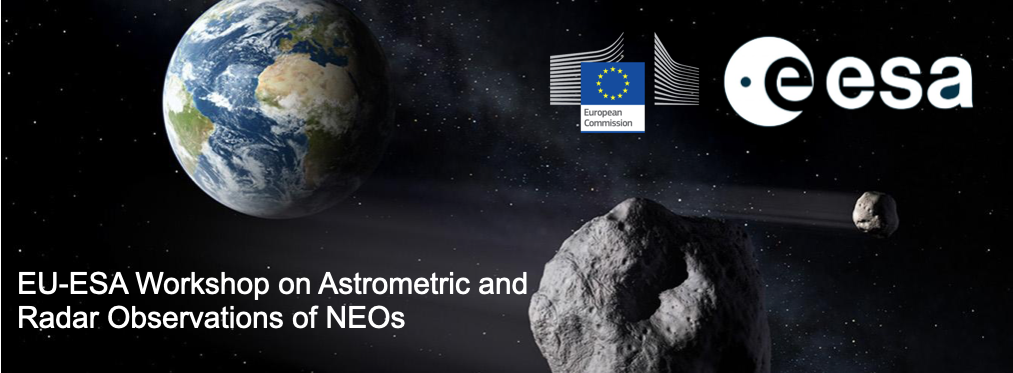The Near-Earth Object Coordination Centre (NEOCC) of the European Space Agency is an operational hub that, among other tasks, determines the orbits of near-Earth objects (NEOs) and assesses their probabilities of impacting Earth. Since 2012, the NEOCC has shared NEO-related data via its dedicated web portal (https://neo.ssa.esa.int/). Over the course of its operational phase, significant...
The Astrometry Data Exchange Standard (ADES) is a new data format for asteroid astrometry, providing many other feature than the previous 80-column format which was adopted by the Minor Planet Center (MPC). Among other information, observers are allowed to report the measured astrometric uncertainties and time uncertainties.
Reporting astrometry in ADES has many advantages, and the...
The Minor Planet Center (MPC) is the world's only center for collecting and disseminating observations of minor planets, comets, and natural satellites. The MPC receives between 3 and 4 million observations per month, for a total of more than 30 million observations per year (before Rubin). Historically, the MPC applied an arbitrary limit of 2 arcseconds when accepting astrometry of attributed...
There are multiple components to the uncertainty of an astrometric observation.The astrometric solution, based on the pixel coordinates of catalog reference stars, involve coefficients whose uncertainties can be computed using standard linear algebra techniques. Independent of that is the centroid of the target object, which depends primarily on the image width and signal-to-noise ratio,...
Astrometric uncertainties are central to any orbit‑fitting procedure. The result of a fit is a nominal solution, which represents the single orbit that best matches the observations, and a confidence region describing the orbital uncertainty, which includes the set of orbital elements statistically compatible with the data and the error model. For well‑observed asteroids, the region is well...
NEO Surveyor will produce observations of hundreds of thousands of near-Earth objects during its 5-year primary mission. Being taken at mid-infrared wavelengths, the astrometric uncertainties will be generally larger than those from ground-based telescopes, while the planned survey cadence means that each tracklet will cover a longer timespan. The access to low elongations enabled by...
One of our main goals is to provide precision astrometry for high-profile objects, which require having a network of telescopes properly characterised and suite of sensors fully understood. We routinely participate in IAWN campaigns for timing, rapid response, but also do training with close-approachers or artificial objects in high orbits or reentering.
Timing of the observations is...
Accurate orbit determination of near-Earth objects (NEOs) relies critically on the precision of astrometric
observations, including the timing of each measurement. In this work, we investigate the effect of
observation time uncertainty on orbit determination by analyzing observational data with explicit timing
uncertainty information. We performed Orbit Determination task using astrometric...
Machine Intelligence Zrt is advancing Europe’s efforts in Near-Earth Object (NEO) detection through the development of NEODetect, a cutting-edge AI-driven system designed for real-time analysis of astronomical images while Konkoly Observatory is currently leading Europe’s Near-Earth Object (NEO) survey effort, with more than 250 discoveries in the past four years, including three imminent...
Scientific CMOS (sCMOS) detectors are being increasingly introduced into astronomical instrumentation due to their fast readout speeds, low read noise, and growing affordability. These features are especially relevant for observing Near-Earth Objects (NEOs), which are often faint, fast-moving, and require high-cadence observations.
In this talk, I will present our experience using sCMOS...
Astrometry of moving targets with HST imaging devices presents some interesting challenges to retain the full precision possible. The dominant challenge comes from the differential motion between the object and the background stars. This motion includes the orbital path of HST around the Earth in addition to the usual orbital motions of the Earth and object around the Sun. Just as important...
Occultations of stars by solar system objects provides a very accurate differential position of the object relative to the occulted star. The precision of this measurement can reach micro-arcsecond levels, particularly in the outer solar system. The conversion of such constraints into absolute astrometry requires separate knowledge of the star position. Starting with the release of the Gaia...
We present the results of our analysis of the Gaia Focused Product Release (FPR) astrometry [1] and the results of the Main Belt Asteroid (MBA) mass estimation exercise using all available astrometry [2]. Gaia FPR includes astrometric observations of more than 156,000 asteroids [3]. The high precision of these astrometric observations requires careful modeling of the dynamics and the...
In the past, observations from space assets successfully showed the potential of discovering and analysing NEOs and other small bodies in the solar system within the scope of its mission (e.g., Gaia, NEOWISE). More and more, we make use of more unconventional observations from spacecrafts that were not fully intended for such operations – 2024 YR4 observations by JWST turned out to be a...
Searching the sky for potentially hazardous asteroids is typically carried out by dedicated ground-based surveys. These observations face certain limitations, as the telescopes operate in the visible wavelength range and only observe at night. Since optical telescopes detect asteroids via reflected sunlight, objects approaching Earth at very small elongation angles are particularly difficult...
Occultations by asteroids are an outstanding technique capable of providing extremely astrometry relative to the occulted star. Currently, occultations (mostly observed with portable equipment) provide several hundred astrometric observations per year, in an increasing trend.
The Gaia mission has contributed to occultation both by reducing the uncertainty on both asteroid orbits and star...
Planetary radar observations provide a powerful tool for post-discovery characterisation of the physical and dynamical properties of asteroids, comets, the Moon, and terrestrial planets. Radar systems can measure the asteroid’s radar cross section and Doppler broadening, which provide information on the asteroid’s size, rotation rate, and the composition. Radar can also be used for...
From 2019 to 2022, ESA funded the pilot project “NEO Observation Concepts for Radar Systems,” aimed at developing a European radar system for Near-Earth Objects (NEOs). The initiative focused on enhancing planetary defense, mission planning, and scientific research. Key contributions came from INAF, SpaceDyS,...

